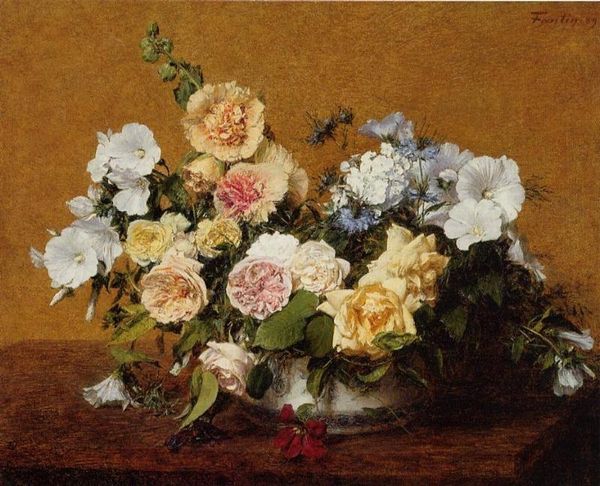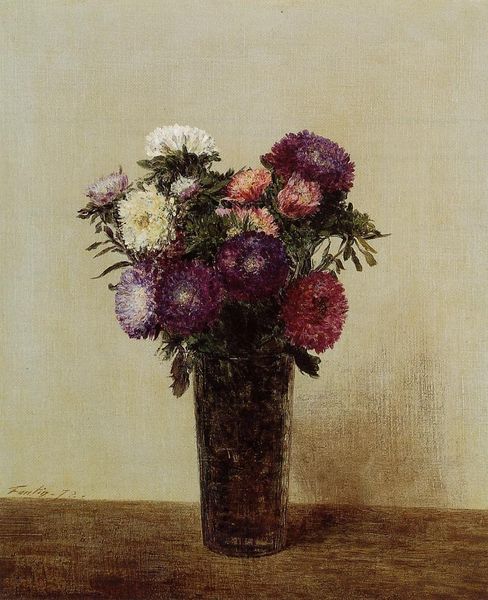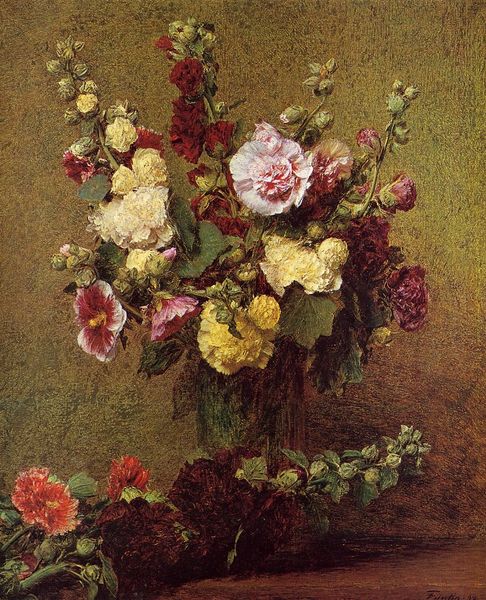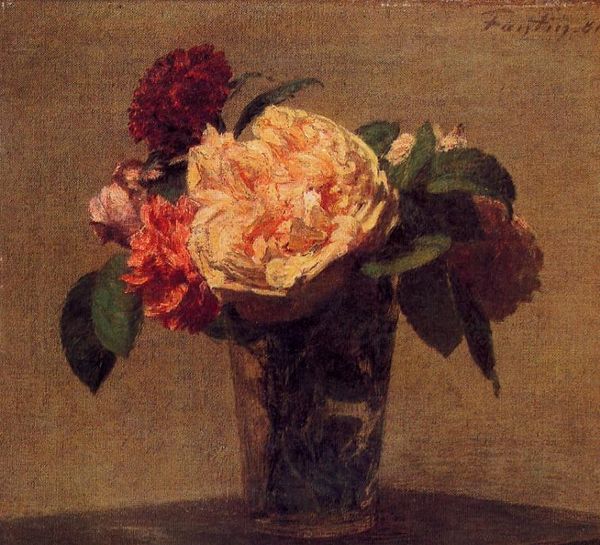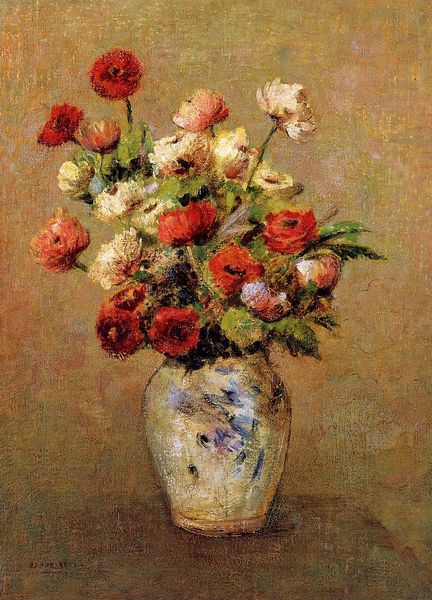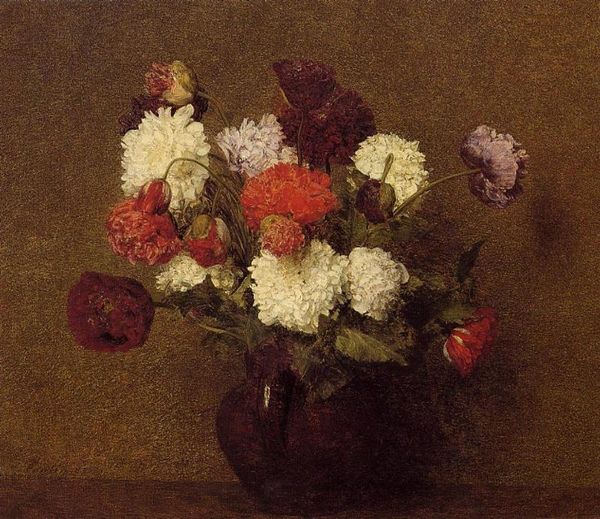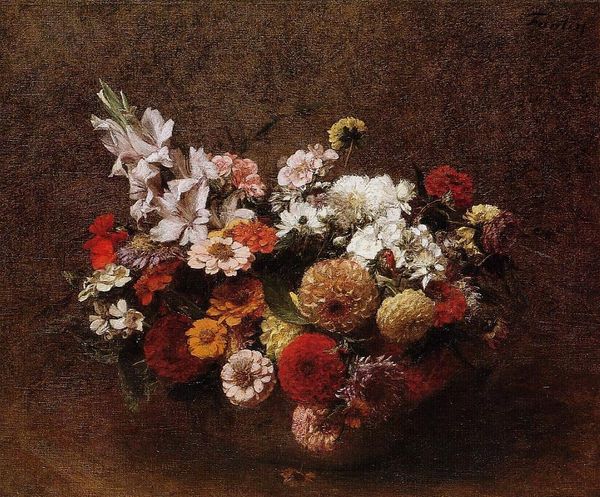
painting, oil-paint
#
gouache
#
painting
#
impressionism
#
oil-paint
#
oil painting
#
france
Copyright: Public domain
Curator: Before us, we see Henri Fantin-Latour's "Mixed Flowers" painted in 1887. He captured this riot of blossoms in oil on canvas. What are your initial impressions? Editor: There's a delicate somberness to it, isn't there? The dark, earthy backdrop heightens the luminous quality of the blossoms. It has a quiet melancholy, a sense of transient beauty caught at its peak. Curator: Observe how Fantin-Latour’s composition relies on a masterful interplay of light and shadow. Notice the arrangement; a structural harmony exists between the varying forms of flowers. Each is granted individual significance. Editor: Beyond form, flowers are potent symbols, steeped in cultural meaning. Roses represent love and passion; white conveys purity or remembrance. Mixed together, the arrangement might symbolize complex emotions, perhaps the bittersweetness of life. The way Fantin-Latour juxtaposes them allows for a meditation on fragility. Curator: Indeed, his brushstrokes create varied textures to engage in a formal tension. Some flowers, such as the rose, possess more realistic features. Editor: He emphasizes fleeting beauty; in French culture, floral paintings were common and carried multiple meanings from love to mortality depending on the context and arrangement of the chosen blooms. Curator: You raise an interesting point; although rooted in a French style, the canvas offers an exercise in contrasts of shapes. Observe how each flower interacts with one another. It allows for one to look deeper into Impressionism. Editor: Ultimately, this painting, born from pigment and bloom, speaks to something universally human. It makes you think of life’s fragile, transient beauty. The blooms fade, but the image remains, resonating. Curator: An insightful contemplation. For me, the strength is the painting’s own construction, and Fantin-Latour allows one to observe how such fleeting beauty can exist through forms.
Comments
No comments
Be the first to comment and join the conversation on the ultimate creative platform.

